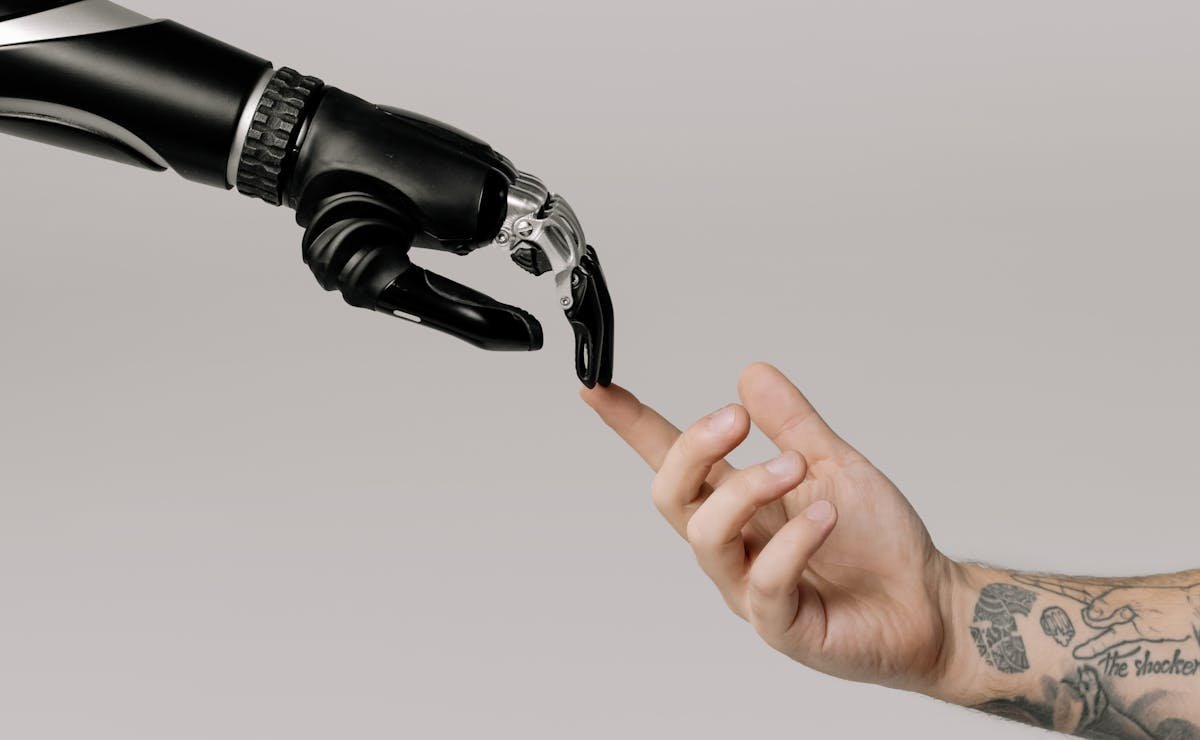How to create an artificial intelligence from scratch and main challenges
Technology / Date: 04-03-2025

No one can know how to create artificial intelligence without first delving into its basic concepts. The most basic of them says that Artificial Intelligence is any machine, generally computerized, capable of simulating human reasoning .
The difference is that human beings learn through experience, through reading and listening. Machines depend on someone inserting a program into them that makes them capable of learning and developing artificial intelligence .
How to create artificial intelligence from scratch?

The idea of learning how to create your own AI is quite seductive and, at first, it seems like a tremendous challenge. However, when we learn what is needed to develop artificial intelligence, we see that the mission may be a little less complex than previously imagined .
Let’s check out the initial steps of this journey below.
1. Understand the theoretical foundations
It would be unfeasible to even think about how to create artificial intelligence without first having a clear vision of the fundamentals behind this technology .
As chapter 4 of the book Artificial Intelligence, Fundamentals, Concepts, Applications and Trends says , “Artificial Intelligence (AI) is an area of computer science that focuses on creating systems that can perform tasks that normally require human intelligence to be performed”.
Therefore, it is important to read a lot and acquire this theoretical knowledge before anything else.
2. Identify the problem that AI will solve
The popularization of tools like ChatGPT has perhaps created the perception that AI is only suitable for being a kind of encyclopedia .
In fact, this is just one of its possible functions, as almost every type of task or activity can be facilitated with this technology. Therefore, you need to define what you want to solve with the AI to be developed.
3. Set clear goals
Once the problem to be solved has been identified, it will be possible to create artificial intelligence according to one or more objectives .
Initially, this objective must be measurable and ambitious enough, considering the reality in which it will be inserted. The SMART matrix is a good starting point, and it can be adapted according to the available data and possible limitations of a project.
4. Collect and process data
Once the problem that AI should help solve and the goals to be achieved throughout its creation are clear, it is time to gather the data that will guide the action plan.
This without leaving aside ethical and legal issues, especially in sensitive areas such as Law, Medicine and Accounting-Tax.
5. Choose the most suitable model
Without data, no one develops any program, just as creating artificial intelligence would be impossible without defining the most appropriate model .
Consider then the three best-known models:
- Artificial general intelligence (AGI) : AI with the ability to learn by itself
- Artificial Limits (ANI) : machines developed for more restricted and specific tasks
- Superintelligence (ASI) : most advanced form of AI, considered even superior to human intelligence.
6. Train the model
Real AIs don't happen overnight. To meet the challenges for which they are developed, they need to be trained . Basically, this training depends on tests, as well as a database robust enough to give the AI the expected versatility in its responses .
7. Evaluate the performance of the features
The final phase of AI creation is when developers and customers evaluate the AI, which by this point should be very close to its final version . This assessment involves carrying out tests in order to detect whether the functionalities are in line with expectations.
Here it is worth using a prototype or, if applicable, a Minimum Viable Product (MVP) to be tested among a select group of people.
8. Implement the model in the company
Once the AI has passed all possible test batteries, the long-awaited moment of launching it finally arrives . This launch, in turn, can be done through internal advertising campaigns, in which the new technology will be presented.
Types of artificial intelligence
Now that you know what it takes to develop artificial intelligence, you might still be wondering how to create artificial intelligence that actually works .
There are, as we have seen, different AI models, each one more or less suited to a context and function. There are also intelligences considered “strong” or “weak”, although, in this case, the names are not a value judgment . Discover its features below.
Weak AI
Any technology in Artificial Intelligence that is capable of providing responses, but based on a limited set of commands and conditions , is called weak AI .
In other words, it is an AI that, although it can perform complex calculations and generate texts, does so without a reasoning structure behind it.
Strong AI
A strong AI is one that not only generates responses, but is capable of simulating the complex reasoning structure of human beings .
It's as if the machine is aware of why it does certain things and is even able to discern between right and wrong.
Follow Us
Newsletter
Subscribe to our newsletter to stay updated with our latest news and offers.
We respect your privacy.Trending










